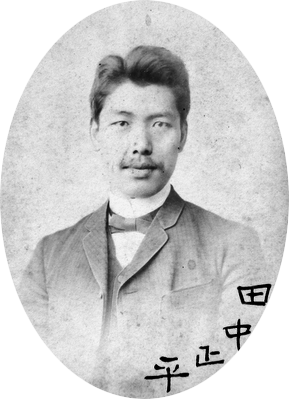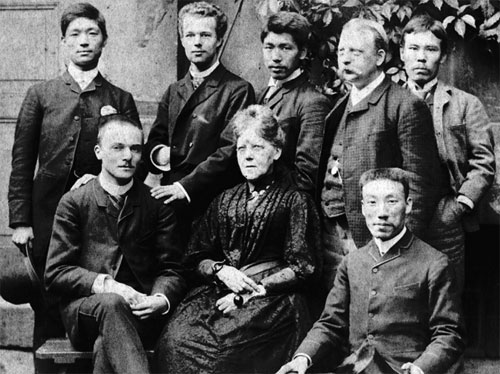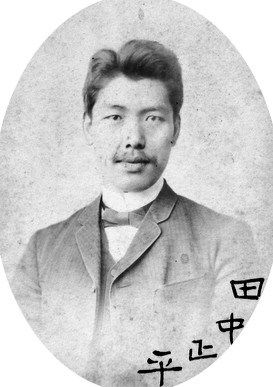
Who was Shohe Tanaka
Tanaka Shohe was a Japanese scientist, music theorist, and inventor who lived from May 15, 1862, until October 16, 1945. He earned his bachelor’s degree in physics from Tokyo University in 1882. In 1884, he and Morigai were transferred to Germany on an imperial stipend to pursue Ph.D. studies. His thesis was regarding just intonation and how to put it into operation.
Shohe Tanaka (1862-1945), a young Japanese scientist and innovator, invented the adding machine in the early 1890s while studying for his doctorate in Berlin, the capital of the German Reich. He sought and received multiple patents for such devices in 1895, including two German patents issued in 1895 and 1896, a French patent issued in 1897, and a British patent issued in 1898. Tanaka’s primary goal was to create a stop mechanism for adding machines to prevent the toothed wheels from exceeding.
Quick Facts
- Full Name
- Shohe Tanaka
- Birth
- June 12, 1862
- Death
- October 16, 1945
- Net Worth
- NA
- Awards
- Asahi Prize
- Silver Medal for Academic Achievements
- Children
- NA
- Nationality
- Japanese
- Place of Birth
- Mihara District, Awaji Province
- Fields of Expertise
- [“Physics”,”Electromagnetism”,”Musical Acoustics”]
- Institutions
- Tokyo Imperial University, University of Berlin, Institute of Electrical Engineering
- Contributions
- Mathematical Harmonium, an early calculating machine.
For mechanical transposition, Shohe Tanaka embraced Steiner’s idea of having 12 keynotes in Pythagorean tuning. However, as indicated in Table 109, he expanded his keyboard to 26 distinct notes. As a result, there were just 70 unduplicated pitches in Tanaka’s “Transponir-Harmonium,” or “Enharmonium312 “‘s notes per octave, no more than on an organ reported by Ellis that had a total of 14 x 11 or 154 notes per octave, with 70 unique pitches.
Early life
Shōhe Tanaka was born in Yahata village, near Minamiawadji, now a town in Mihara District, Awaji Province, Japan, on June 12, 1862. As a child, he had a strong ear for music, and he enjoyed ningyo joruri (Japanese puppet theatre in which recited narrative and dialogue is accompanied by a shamisen). He also gathered insects and staged fictitious competitions between them based on the sounds they made.
Tanaka entered Osaka’s Foreign Languages School in 1874 but soon transferred to Tokyo’s English Language School. Then, in 1877, he enrolled in Tokyo’s School of Foreign Studies, and in 1878, he enrolled in Tokyo Imperial University’s Natural Sciences Faculty. Some well-known Japanese scientists were among his classmates, including physicist Tanakadate Aikitsu (1856-1952) and mathematician Rikitaro Fujisawa (1861-1933).

Career
Bachelor’s degree
Thomas Corwin Mendenhall (1841–1924) an autodidact physicist and meteorologist from the United States, was a physics visiting professor at Tokyo Imperial University at the time. Mendenhall was convinced that comprehending music is a requirement for good physics study, and there was a tiny organ in the physics room to which Tanaka had direct access in this regard. Furthermore, Mendenhall proposed that Western European music was constructed in line with natural rules, followed by the “abnormality” of Japanese music, which defied Tanaka’s intuitions and prompted him to continue his studies in this sector.
Tanaka earned his bachelor’s degree from the university (Department of Physics) in 1882, making him the university’s youngest graduate at the time. During the diploma awarding ceremony, Tanaka earned a silver medal for his academic achievements from the Emperor’s hands. He began working as an assistant lecturer in December of the following year, defending the relevant qualifying work.
Time in Germany
Tanaka was sent to Germany, in 1884, with other young Japanese scientists and intellectuals, which included a prominent Japanese army surgeon, translator, and novelist, whose Doitsu nikki (German diary) kept records of Tanaka. Mori was sent to study military hygiene and sanitation from 1884 to 1888 for studies in musical acoustics and electromagnetism, which he defined as priorities. Tanaka received a three-year scholarship to study in Germany, but he stayed for fifteen years. Tanaka began his research at the University of Berlin under the supervision of Hermann Helmholtz, a well-known German physicist.
While staying in Germany, he studied European music extensively. In Berlin, he studied piano and began singing in a choir. He also studied counterpoint harmony and was a music theorist. Tanaka’s key work on musical acoustics, “Studien im Gebiete der reinen Stimmung” was published in 1890. Tanaka also created and patented the Enharmonium (enharmonic+harmonium), a just intonation musical instrument having 20 keys and 26 pitches in an octave. It was an incredibly complex device with twenty-two-octave divisions, knee levers, and a transposing mechanism. Tanaka went extensively around Europe, successfully advocating its benefits to the general population, finally gaining backing from Emperors Meiji and Wilhelm II (in April 1890) and artists.
Tanaka left the study of musical acoustics in the last years of his stay in Germany. From 1894 until 1899, he focused on engineering research focusing on railway transportation. During this time, he also received several patents for calculating machines.
What Did Shohe Tanaka Invent
Invention 1
Tanaka was both a theoretician and an inventor. He created and patented the Enharmonium (enharmonic+harmonium), a just intonation instrument with 20 keys and 26 notes in an octave.
Tanaka was an early proponent of 53 equal temperaments as a way of approaching 5-limit just intonation as precisely as possible. He was the first to gain a clear understanding of the temperament, noting that it tempered both the schisma, 32805/32768, and the kleisma (audio speaker iconPlay) an interval of size 15625/15552 = 26 35 56, which is the interval in which five just minor thirds of size 6/5 differ from a just tenth of size 5/2 exactly. Tanaka was the first to name this interval after observing it in practice. By tempering out schisma and kleisma, Tanaka found out that the 53 equal temperaments were described entirely as a five-limit temperament.
Tanaka resigned from his railway job as the top man and went part-time, combining it with work in the Ministry of Culture and Education (he was a member of the Committee on Japanese Music since 1921) and led the music society “Pure Sound,” which he founded in 1907.
Shohe Tanaka is regarded as one of the ancestors of contemporary Japanese musicology. He resumed his studies of just intonation after retiring in 1929 and continued to conduct active research and organizational musical activity until his death. He also served as the Institute of Electrical Engineering president, founded in 1930.
Tanaka also worked in the “Institute for the Study of Folk Spiritual Culture,” established during the war for ideological goals. In the last years of his life, he examined the preservation of traditional Japanese music.
Shohe Tanaka: Awards and Achievements
Silver Medal for Academic Achievements
During the diploma awarding ceremony, Tanaka earned a silver medal for his academic achievements from the Emperor’s hands.
Asahi Prize
He also headed the Institute of Electrical Engineering, which he founded in 1930 and for which he received the Asahi Prize for Culture in 1937.
